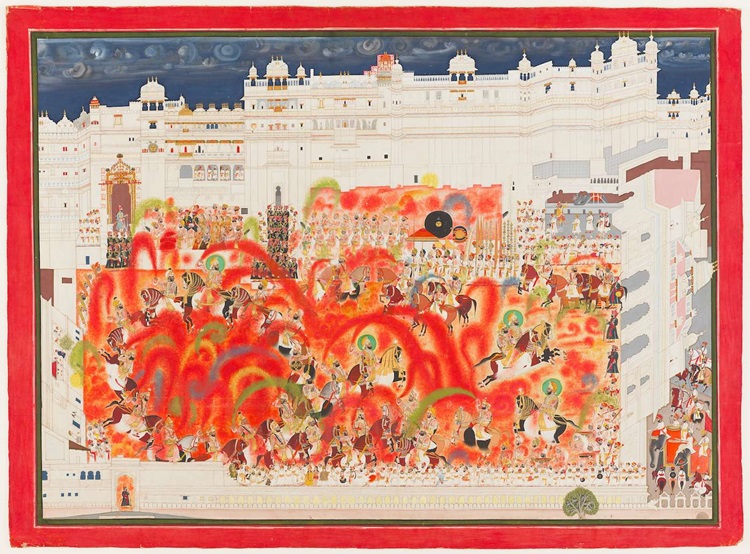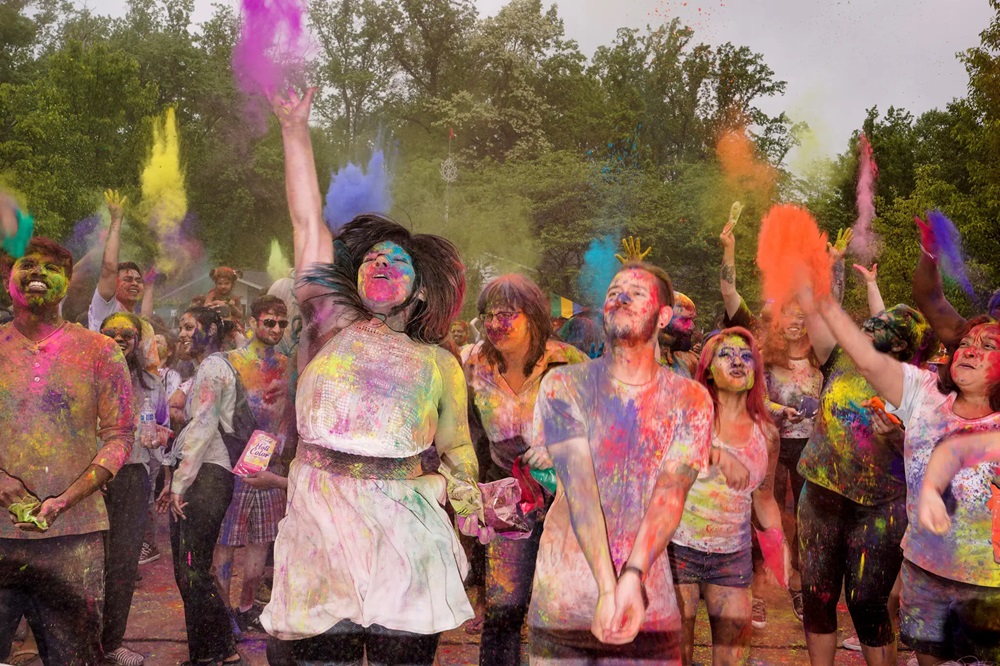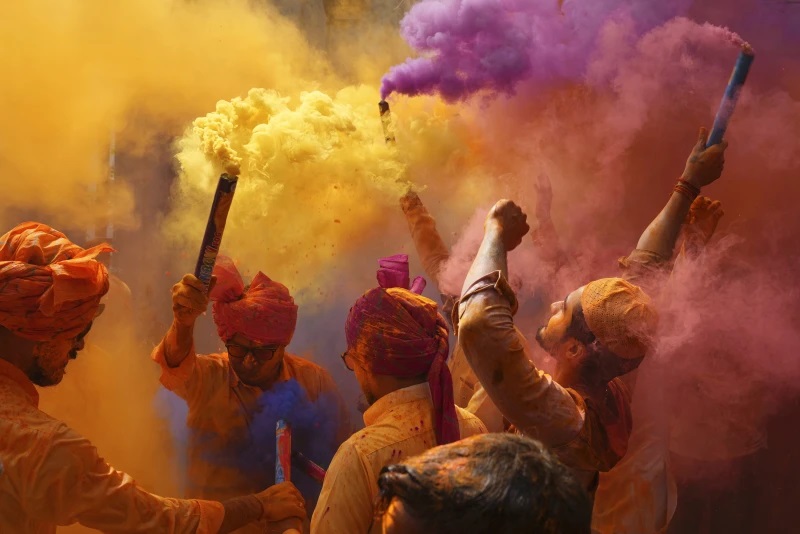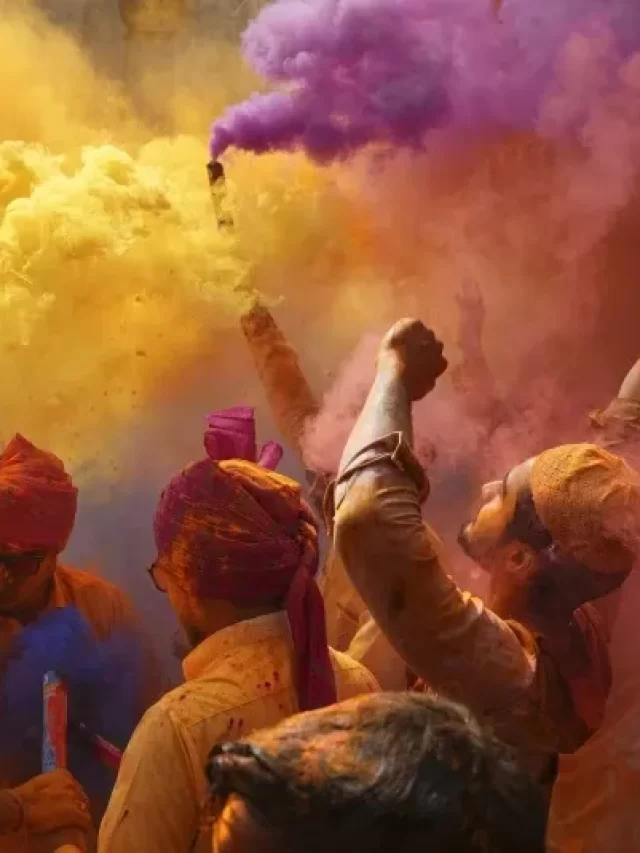Holi is just around the corner, and when one considers the celebration, it is difficult to ignore the magnitude and splendour of the Mughal era. It was full of joy, friendship, and a sense of togetherness that transcended religious boundaries. Numerous art schools have produced miniature paintings that capture these facets of history. On the occasion of Holi, royals of all sizes throughout the nation openly interacted with their staff; it wasn’t simply the Mughals who dropped their guard.
The Hindu mythological tale of Holika and Prahlad is among the most well-known tales connected to Holi. Although Prahlad was a follower of Lord Vishnu, his father, King Hiranyakashipu, was a despot who wished for universal adoration of him as a deity. Hiranyakashipu plotted with his sister Holika, who was blessed with fire resistance after Prahlad disobeyed his father and kept worshipping Lord Vishnu. Prahlad was going to be burned alive. But because of his love, Prahlad survived the fire while Holika burned to death. The festival of Holi commemorates this triumph of good over evil.
The well-known mythical tale of Lord Krishna and his beloved Radha’s amusing pranks is also connected to Holi. Legend has it that young Krishna, whose complexion was dark, was jealous of Radha’s lovely skin. He initiated the Holi ritual of applying colours on Radha’s face, a cheeky attempt to colour her face with hues playfully. Since then, this lighthearted act has become essential to celebrating joy, love, and the victory of good over evil.
Holi also heralds the approach of spring, a time of rebirth and renewal. In addition to singing and dancing to traditional tunes, people enjoy the brilliant colours of spring by hurling coloured powders (Gulal) and coloured water at one another and indulging in festive dishes and sweets. The festival of Holi surpasses boundaries based on caste, creed, and religion. It is widely celebrated with tremendous passion by Hindus and members of various faiths in India and many other parts of the world. It encourages harmony, fraternity, and a sense of community.

Holi is a time for reconciliation and forgiveness as well. People come together to end hate, start again, and restore shattered connections. It’s time to put aside grievances and give each other warm, loving embraces.
Art historian Dr Ratan Parimoo, who worked at Maharaja Sayajirao University in Baroda, affirms that numerous miniature traditions have illustrated the celebration. The ‘Pahadi’ schools of art have traditionally held a dominant position. He also notes that most of the subjects in these paintings are Krishna-related and show Gopis experimenting with colour with Krishna. The paintings create the impression of colour spraying, evoking scarlet and orange smoke. The Gopis and the cowherds may be seen running toward and surrounding Krishna. According to Parimoo, the figures have great dynamic and exploratory movement.
There are many pictures of rulers and monarchs mixing with the ladies in their harems, but there are also pictures of Krishna and Radha. The many schools of art determine the subjects chosen. One thing is sure, though, despite the vibrant variety of themes: roughly 300 years ago, everyone, regardless of faith or creed, celebrated Holi with abandon. The song “Aao re Chisti, holi khelo” by Amir Khusrow contains a passage that solidifies the multiculturalism that Holi represented at the time.
‘Holi’ around the World
Despite having its roots in India, Holi is now a worldwide festival of love and harmony because of its joyful atmosphere. Though regional differences in customs and traditions exist, nations like Bangladesh, Pakistan, and Nepal celebrate Holi passionately. Holi has become increasingly popular in Western countries as people gather to celebrate the vibrant colours and cross-cultural interaction. Holi has evolved from colourful street parades in New York City to colourful music festivals in London, representing inclusivity and diversity.
The UK has a sizeable Indian diaspora. Therefore, Holi celebrations are colourful and energetic there; public gatherings in cities like Manchester, Birmingham, and London bring people together to taste Indian food, enjoy music and dance performances, and experiment with colours. Australia has seen a rise in the popularity of Holi celebrations, especially in major cities like Sydney, Melbourne, and Brisbane. Events are arranged by temples and community organizations, bringing together people from many backgrounds to celebrate with traditional Indian cuisine, music, and colours.
This event is unique and lovely because, on this day, people can toss coloured powder and water at one other, inverting the traditional ranks of caste, gender, position, and age. Street celebrations are frequently characterized by crude speech and actions. Nevertheless, the ordered patterns of society are ultimately restored and revitalized when everyone takes a shower, puts on clean white clothing, and visits friends, teachers, and family.
Aesthetics of Holi
The eruption of colours is the most remarkable feature of Holi. People gather to play with coloured water and powders (Gulal), which combine to create a captivating rainbow of colours. The colours stand for the vitality of spring, the triumph of good over evil, and the happiness of existence. Holi is a time of pure joy and celebration. People dance, sing, and play with colours in the streets, parks, and open areas, creating a joyful and harmonious atmosphere. The excitement and positive energy permeate the air, creating an infectious celebratory environment.

To contrast with the vibrant powders, people frequently dress in traditional Indian clothing for Holi, such as white kurtas or salwar kameez. The contrast heightens the colours’ visual impact and contributes to the festival’s aesthetic appeal. A crucial component of Holi celebrations is music. The joyous atmosphere is enhanced by playing traditional Holi songs or Holi ke geet. People show their enthusiasm and energy by dancing to the beat of traditional instruments like dholak drums.
In addition to the dry colours, water is a significant component of Holi celebrations. Participants toss water-filled balloons at one another or use water cannons (Pichkaris) to spray coloured water, giving a lighthearted and enjoyable aspect to the festivities. During Holi, elaborate rangolis—beautiful designs created with coloured powders or petals of flowers—decorate courtyards and entrances, enhancing the visual appeal of private residences and public areas. Rangolis, representing happiness and prosperity, frequently has flowery themes and vivid colours.
Holi is also a chance to indulge in traditional Indian sweets and dishes. Preparing and sharing sweet delights among family and friends, such as Gujiya, Malpua, and Thandai (a pleasant milk-based drink flavoured with spices), enhances the festival’s sensory experience. Beyond its aesthetic qualities, both visual and tactile, Holi embodies the idea of social harmony and community building. Individuals from many backgrounds unite in celebration, bridging the divides of social standing, caste, and creed. Holi is an incredibly inclusive and touching festival that gains depth from the feeling of oneness and connection.
With bright colours filling the air and laughter resounding through the streets, Holi, the Festival of Colors, is a radiant testament to India’s rich cultural legacy and the universal spirit of joy and togetherness. It brings people together in a kaleidoscope of celebration, transcending barriers of religion, caste, and creed. A visual extravaganza of colours, music, dance, and delicious delicacies, Holi’s aesthetics are rooted in ancient mythology and rich in tradition.
And That’s How You Play Holi: Indian Miniature Paintings Celebrating Courtly Colours







